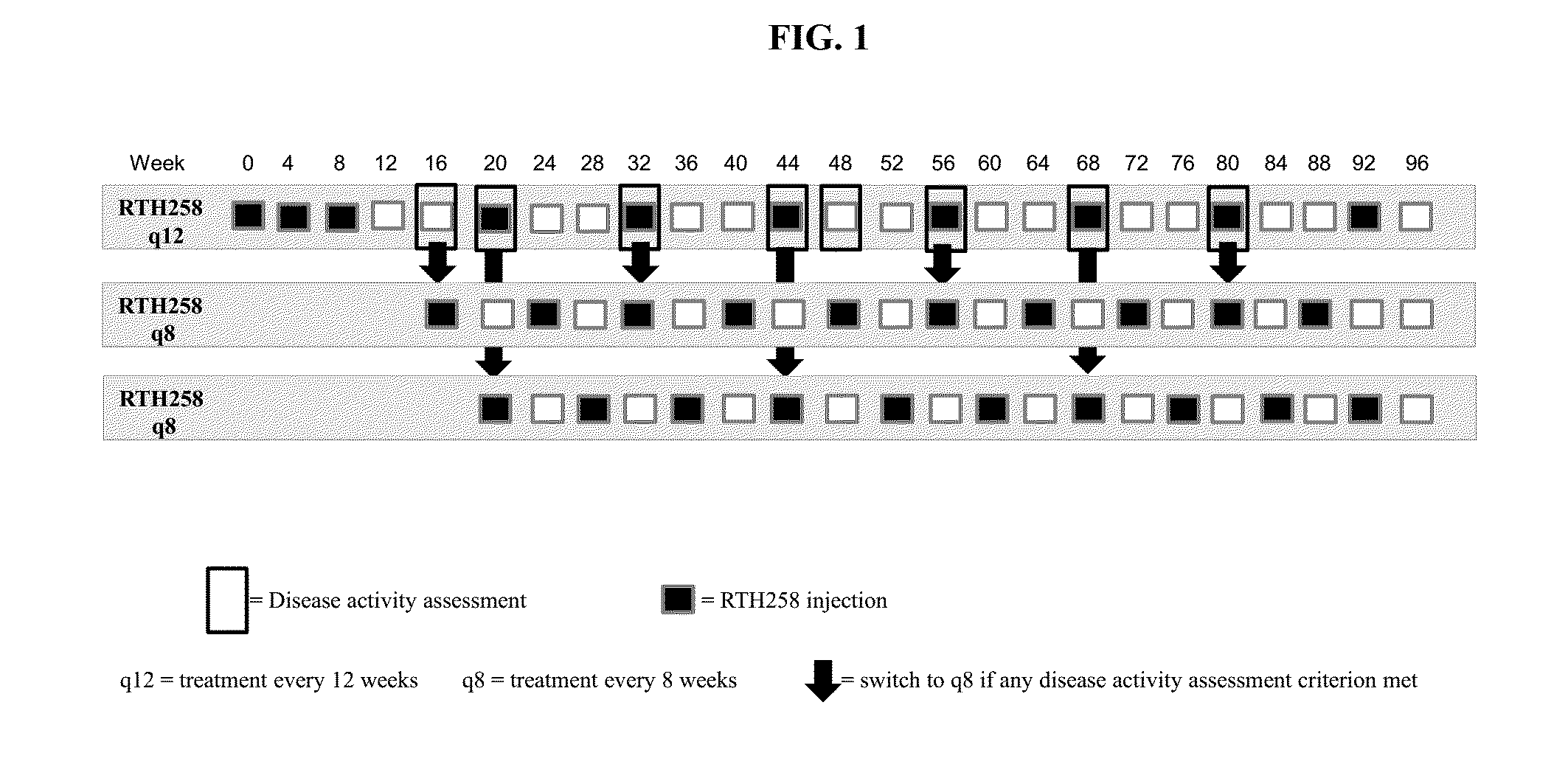Methods for treating ocular diseases
a technology of ocular disease and vegf, which is applied in the field of methods for treating ocular disease with vegf antagonists, can solve the problems of progressive, severe, irreversible vision loss, and increased likelihood of formed vessels leaking blood and serum,
- Summary
- Abstract
- Description
- Claims
- Application Information
AI Technical Summary
Benefits of technology
Problems solved by technology
Method used
Image
Examples
examples
[0087]Two treatment groups of subjects with untreated active CNV due to AMD receive multiple injections of RTH258. One group receives 3 mg / 50 μL and the other group RTH258 6 mg / 50 μL, initially injected 3 times at 4 week intervals (Day 0, Week 4 and Week 8), followed by injections (intravitreally) every 12 weeks (q12) during the first year (Week 48), unless the subject meets any of the criteria set forth below for Weeks 0 through 48 at any of the following visits. If the criteria are met, the subjects are assigned to receive injections every 8 weeks (q8) up to Week 48. Beginning at Week 16, at visits when subjects do not receive an active injection they are administered a sham injection. For the sham injection the tip of an injection syringe (the hub without a needle) is used. All doses are delivered in 50 μL (0.05 mL).
[0088]The study eye is assessed before, immediately (0-5 minutes) post-injection / sham, and 30 (±15) minutes after each injection / sham to ensure that the procedure and...
PUM
| Property | Measurement | Unit |
|---|---|---|
| Length | aaaaa | aaaaa |
| Time | aaaaa | aaaaa |
| Time | aaaaa | aaaaa |
Abstract
Description
Claims
Application Information
 Login to View More
Login to View More - R&D
- Intellectual Property
- Life Sciences
- Materials
- Tech Scout
- Unparalleled Data Quality
- Higher Quality Content
- 60% Fewer Hallucinations
Browse by: Latest US Patents, China's latest patents, Technical Efficacy Thesaurus, Application Domain, Technology Topic, Popular Technical Reports.
© 2025 PatSnap. All rights reserved.Legal|Privacy policy|Modern Slavery Act Transparency Statement|Sitemap|About US| Contact US: help@patsnap.com

